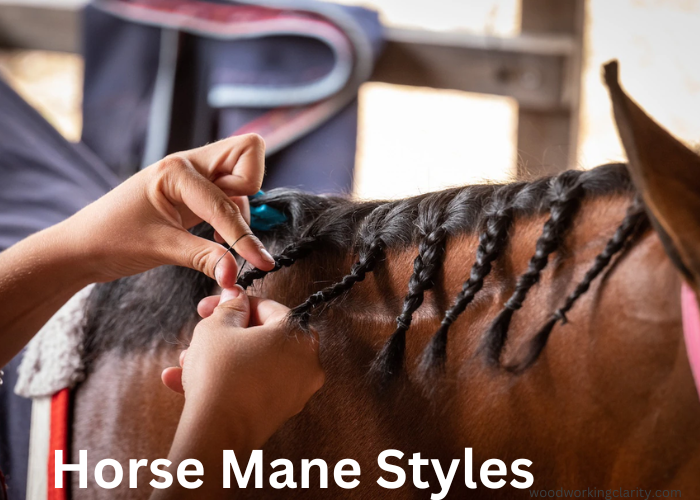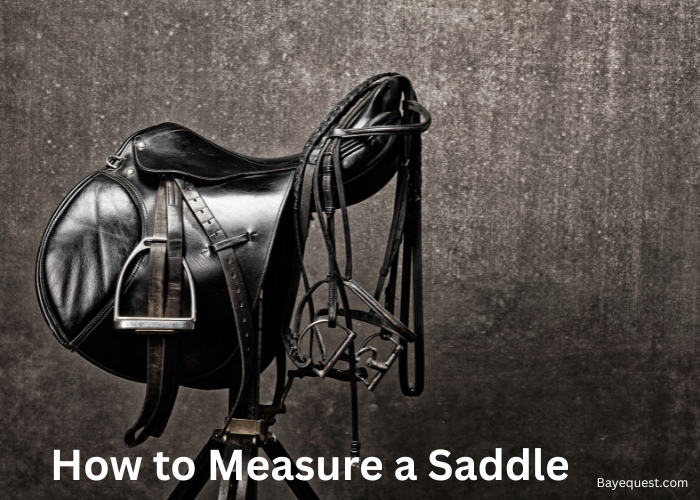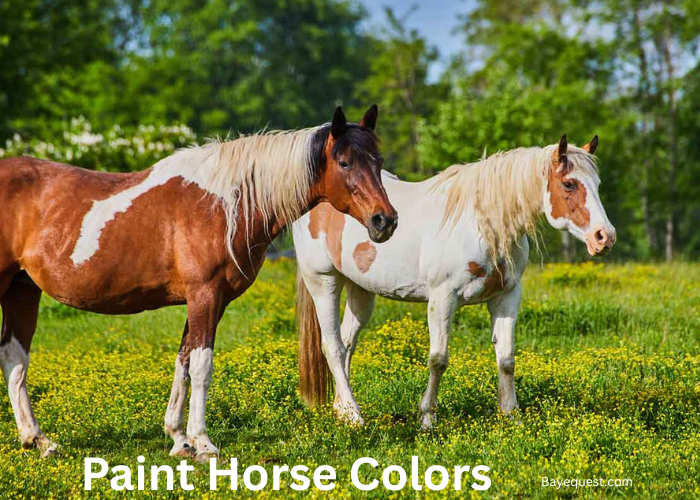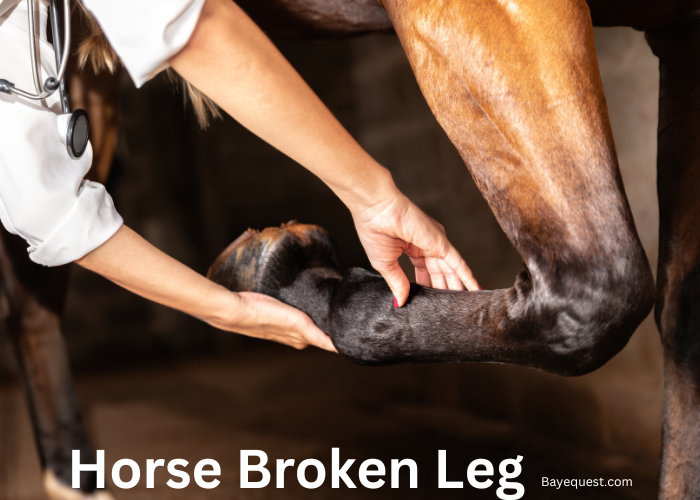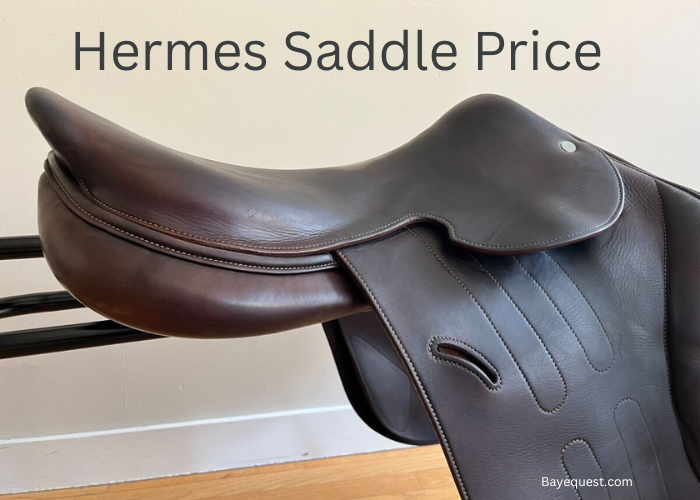A horse’s mane does more than look pretty; it shows off its personality. Some horses have long, flowing manes, while others look sharp with neat braids or trims.
Whether you ride for fun or compete in shows, the right style matters. A good mane style can turn heads and boost your horse’s appearance.
Some styles are classic, others modern or playful, but all bring out something special.
Looking for the perfect look for your horse? Let’s break down the most popular mane styles and help you pick the right one.
Reasons for Braiding a Horse’s Mane
Braiding a horse’s mane isn’t just about looks. It has practical benefits too.
Here are the main reasons why riders and owners choose to braid their horses’ mane:
1. Keeps the mane neat and tidy
Braiding prevents tangling and keeps the mane clean, especially during riding or turnout. It also reduces breakage and makes grooming easier.
2. Enhances appearance for competitions
In disciplines like dressage, hunter shows, and eventing, a neatly braided mane creates a polished, professional look. Judges often expect well-groomed horses in high-level competitions.
3. Prevents mane damage
Long, flowing manes can get caught in tack, reins, or brush when riding through trails. Braiding keeps the hair secure and reduces the risk of breakage.
4. Traditional in certain disciplines
Different riding styles have signature braiding techniques. Hunter braids, button braids, and running braids all serve specific purposes based on tradition and practicality.
5. Reduces sweating and discomfort
A thick mane can trap heat, especially in warmer climates. Braiding lifts the hair off the neck, allowing for better airflow and keeping the horse cooler during exercise.
6. Improves mane growth and training
Regular braiding can train a horse’s mane to lie on one side. This is helpful for maintaining a uniform look, especially for show horses.
7. Helps prevent mane chewing
Some horses chew on each other’s manes out of boredom. Braiding can make it harder for stablemates to grab and pull out chunks of hair.
Read also: Why do Horses Have Manes?
Tools for Horse Mane Braiding
Braiding a horse’s mane requires the right tools to ensure neat, secure, and long-lasting results.
Here are the essential items every horse owner or groomer should have:
1. Mane comb
Helps detangle and separate the mane into even sections.
Wide-tooth combs work best for thick or long manes.
2. Hair clips or rubber bands
Used to section off parts of the mane while braiding.
Rubber bands secure braids in place. Opt for horse-friendly bands that won’t damage hair.
3. Braiding thread and needle
Essential for sewn-in braids, often used in hunter and dressage competitions.
Strong, waxed thread keeps braids tight and polished.
4. Braiding spray or gel
Adds grip to make braiding easier, especially for silky manes.
Helps control flyaways for a neater finish.
5. Sponge or damp cloth
Wetting the mane slightly before braiding reduces static and improves control.
6. Pulling comb (Optional)
Used to thin out thick manes for a more uniform braid.
Helps achieve a cleaner, more professional look.
7. Scissors
Trims excess hair or thread for a polished finish.
Useful for cutting bands after removing braids.
8. Step stool (For Tall Horses)
Makes it easier to reach the top of the mane without straining.
Horse Mane Styles
A horse’s mane isn’t just about looks, it’s a part of tradition, function, and discipline. Whether for competition, comfort, or cultural significance, different braiding styles serve unique purposes.
Here’s a closer look at popular mane styles and what makes each one special.
1. Straight Braids
Straight braids are one of the simplest and most common mane styles. They involve weaving the mane into individual three-strand braids that run down its length.
These braids are easy to create and require minimal effort, making them a go-to for everyday riding, turnout, or casual events.
They help keep the mane from tangling, especially in windy conditions or when a horse is in the pasture.
While they are not commonly seen in professional competitions, straight braids are practical for riders who want to maintain a tidy look without excessive upkeep.
For added security, rubber bands or thread can be used to keep the braids intact. They also work well as a base for more intricate styles if needed.
2. Crest French Braid
The crest French braid is an elegant and refined style that follows the curve of the horse’s neck, giving it a sleek appearance.
Unlike a standard French braid that runs down the back of the head, this braid starts at the poll and is woven along the crest, incorporating small sections of hair as it progresses.
It’s a popular choice for dressage and eventing, as it keeps the mane secure while highlighting the horse’s muscular neck.
This braid works best for horses with long, thick manes, as shorter hair may not hold the pattern well.
While it takes a bit of skill to perfect, the result is a polished and sophisticated look that enhances the overall presentation.
3. Running Braid
The running braid is a practical and stylish choice for horses with long manes.
It consists of a single, continuous braid that follows the length of the neck, staying close to the crest.
This braid is especially popular for breeds like Andalusians, Friesians, and Lusitanos, where the natural flow of the mane is a signature feature.
It’s often used in dressage competitions and exhibitions, where appearance matters, but functionality is also key.
The running braid prevents the mane from getting in the rider’s way, particularly when performing complex movements.
Unlike button or hunter braids, it doesn’t require the hair to be sectioned off, making it quicker to do. However, because it sits on the crest, it may loosen over time and need occasional re-braiding.
4. Diamond Braid
The diamond braid is one of the most intricate and eye-catching mane styles.
It involves weaving the mane into a series of interlocking sections, creating a diamond-shaped pattern.
This style is most commonly seen in driving competitions, parades, and high-profile horse shows where presentation is everything.
The diamond braid takes skill and patience to execute, as each section must be evenly spaced to create a symmetrical effect.
While it may not be the most practical for everyday riding, it is perfect for making a statement.
Many equestrians use decorative bands or ribbons to enhance the visual appeal of this braid, adding an extra touch of elegance.
Horses with long, thick manes are best suited for this style, as finer hair may not hold the shape as well.
5. Button Braids
Button braids are a classic choice in dressage and eventing, offering a clean, professional look.
The process starts by dividing the mane into equal sections, braiding each one tightly, and then rolling it into a small, rounded bun secured with thread or rubber bands.
The result is a row of uniform “buttons” that run down the horse’s neck, accentuating its natural curves.
Button braids are favored in competitions because they create a polished appearance while keeping the mane secure.
Unlike longer braids, they stay in place during high-movement events, making them practical for jumping and dressage tests.
Since the mane must be short for this style, many riders trim or pull the mane beforehand to ensure the braids are neat and even.
6. Three Strand V Braids
Three-strand V braids offer a unique variation of traditional three-strand braiding.
Instead of running straight down, the braid is woven in a way that forms a subtle “V” shape along the crest of the horse’s neck.
This style is designed to highlight the natural curve of the neck, making it a favorite for English disciplines where appearance is key.
The V shape adds a touch of elegance and symmetry, giving the horse a refined and well-groomed look.
Like standard three-strand braids, these are easy to create and require minimal equipment.
They work well for horses with medium to long manes, as extremely short hair may not hold the shape.
While not as commonly seen in competitions, they are a stylish option for riders looking to add a bit of flair.
7. Hunter Braids
Hunter braids are small, tightly woven braids designed to blend seamlessly with the horse’s neck.
They are a hallmark of hunter competitions, where precision and attention to detail are essential.
To create this look, the mane is sectioned off into small parts, braided tightly, and folded under to create uniform bumps along the crest.
The goal is to enhance the horse’s conformation without drawing too much attention to the braids themselves.
Unlike button braids, which are round, hunter braids lie flatter against the neck.
They require skill and patience to get just right, but when done well, they give a horse a refined, polished appearance that judges appreciate.
Yarn or thread is typically used instead of rubber bands for a seamless finish.
8. Fishtail
The fishtail braid offers a unique texture and a slightly more relaxed feel than traditional three-strand braids.
It’s created by taking small sections of hair from each side and crossing them over into a tight, intricate pattern.
This style is often seen on horses with long, flowing manes and is popular for casual riding or special events rather than strict competitions.
The fishtail braid is elegant but not as rigid as button or hunter braids, making it a great choice for riders who want a stylish yet natural look.
It is also a practical option for keeping long manes tidy during trail rides or turnout.
9. Continental Braid
The continental braid is a traditional draft horse style, most commonly seen in driving competitions and formal parades.
It involves creating large braids that are looped and connected across the mane, forming a crisscross pattern.
This braid is designed to keep the mane secure while adding a striking visual effect.
Historically, it was used to prevent the horse’s mane from getting tangled in harnesses and equipment.
Today, it remains a symbol of tradition and elegance in draft horse presentations.
10. Western Mane Banding
Western mane banding is a technique used in Western pleasure and showmanship competitions.
Instead of full braids, the mane is divided into small sections and secured with rubber bands close to the crest.
This creates a row of neat, evenly spaced sections that give the illusion of a well-managed, flowing mane.
Unlike English braiding styles, banding does not involve tightly woven strands, allowing for a softer and more natural appearance.
This technique highlights the horse’s movement and enhances the overall presentation in Western riding disciplines.
11. Rosette Braiding
Rosette braids are a decorative style where individual braids are curled into spirals and pinned against the neck.
They are commonly used in formal carriage driving and historical reenactments.
This style adds an old-world charm to a horse’s appearance, making it ideal for ceremonies and special occasions.
The spirals can be enhanced with ribbons or beads for an even more eye-catching effect.
12. Traditional Decorative Braids
Traditional braiding has deep cultural and historical significance.
Native American horse braids were often symbolic of battle ranks, while medieval warhorses had their manes braided to prevent an enemy from grabbing them in combat.
Spanish Andalusian braids are still used in festivals to showcase the breed’s elegance.
These braids are more than just aesthetics. They tell stories of heritage, war, and celebration.
How to Choose the Right Horse Mane Style
Selecting the perfect mane style for your horse isn’t just about aesthetics, it’s about function, comfort, and practicality.
The right braid or trim depends on several factors, including discipline, mane length, and the horse’s lifestyle.
Here’s how to make the best choice:
Consider your riding discipline
Different riding styles have traditional mane expectations. If you compete, follow the standards for your discipline:
Dressage and eventing. Button braids or crest French braids are commonly used for a polished, professional look.
Hunter/jumper. Hunter braids provide a tidy and elegant appearance that aligns with show standards.
Western riding. Western mane banding keeps the mane neat while maintaining a natural, flowing look.
Driving and parades. Continental or diamond braids add flair and historical significance.
Casual and trail riding. Running braids or straight braids keep the mane manageable without excessive upkeep.
Evaluate the mane’s length and thickness
Not all mane styles work for every horse. A short, thin mane won’t hold a fishtail or running braid, while a thick, heavy mane may be difficult to keep in tight button braids.
Consider these guidelines:
Short manes. Button braids, roached (shaved) mane, or hunter braids work well.
Medium-length manes. Traditional three-strand braids, crest French braids, or banding are good options.
Long manes. Running braids, fishtail braids, or diamond braids highlight the length while keeping it manageable.
Think about mane maintenance
Some braids require daily upkeep, while others last for several days with minimal effort. Choose a style based on how much time you’re willing to spend on grooming:
Low-maintenance styles. Roached manes, western mane banding, and straight braids require little upkeep.
Medium-maintenance styles. Running braids and crest French braids may need occasional re-braiding.
High-maintenance styles. Button braids, hunter braids, and diamond braids require careful preparation, sewing, or banding to stay intact.
Factor in the horse’s comfort
A mane style should never cause discomfort or irritation. Horses with sensitive skin may find tight braids uncomfortable.
Consider these:
Avoid overly tight braids that pull at the roots, causing irritation.
In hot weather, a roached mane or banded mane allows for better airflow.
Long, loose braids may provide protection from insects but can also tangle easily.
If your horse frequently rubs its neck or shakes its head, a simpler, looser braid may be the best option.
Choose a style based on the event or occasion
If you’re preparing for a competition, a formal, structured braid is essential.
For special events, such as parades or historical reenactments, decorative styles like rosette or diamond braids can add extra flair.
For daily riding or turnout, simple three-strand braids or running braids keep the mane neat without requiring too much effort.
Match the style to the horse’s breed and personality
Some breeds have signature mane styles that highlight their natural beauty. For example:
Friesians & Andalusians: Running braids or long, flowing manes enhance their dramatic appearance.
Draft Horses: Continental braids or diamond braids are commonly used in competitions and shows.
Sport Horses: Button or hunter braids create a refined and disciplined look.
Fun Horse Mane Styles: Conclusion
A horse’s mane isn’t just hair—it’s part of their style and function. The right mane style depends on discipline, comfort, and maintenance.
Some styles are practical, keeping the mane tidy and tangle-free. Others are decorative, adding flair for competitions or special events.
Whether you choose braids, banding, or a simple trim, always consider what works best for your horse.
Keep the mane clean, healthy, and well-groomed to make any style look its best. Ready to try a new mane style?
Pick one that suits your horse and enjoy the process.




